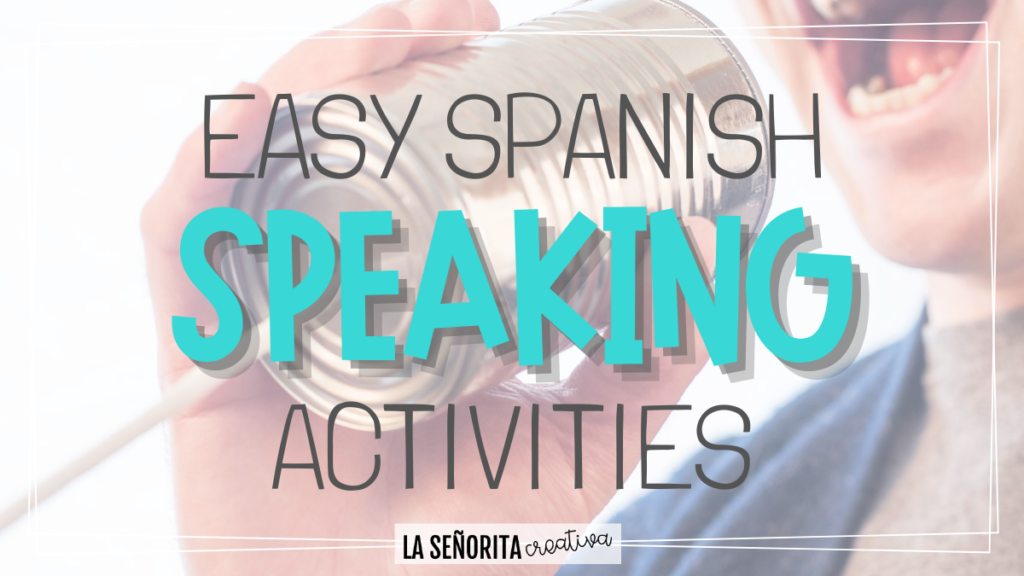
I don’t know about you, but I sometimes struggle to do enough meaningful speaking activities with my students in class. It can be really hard when they don’t feel like speaking Spanish, especially in levels one and two. In my time as a Spanish teacher, I’ve found a few activities that are easy to use and the students enjoy and get excited for. Keep reading to find out my three favorite speaking activities and one can’t-miss tip that will change how you do speaking activities!
People Bingo
People Bingo (or “Encuentra Alguien…” is a fun, low-prep speaking activity that my students love! It’s great for introducing vocabulary (when paired with images) or practicing grammatical structures (such as “¿Te gusta…” and “Me gusta…”). People Bingo works for almost any level and any topic – I have even seen it used in AP Spanish when studying artists and works of art, as well as current events. Sign up for my newsletter below to get a free People Bingo activity to practice gustar or check out the full People Bingo game in my TpT store here!
Information Gap Activities
Information Gap activities are another favorite of mine, and my students love them because they have scaffolding built right in! In an information gap activity, students work with one other person to complete the information they have on their paper. It’s like a jigsaw because each person has half of the information, and they have to work with their partner to fill in the information they are missing. This is another activity that can be adapted to many different topics and grammar points. I especially love doing this at the beginning of level one with basic information such as name, age, address, phone number, etc. as it helps students grow their confidence with speaking in Spanish.
When first doing info gap activities with your students, it’s really important to establish your expectations for the activity. I always make it very clear to my students that they are not allowed to show their paper to their partner until I give them the okay to do so (and that’s only to check their answers when they are finished with the activity). To make it easier for me to monitor, I copy person A’s paper on a different color that person B’s paper, so I can see at a glance if they try to share papers before they are supposed to. I have a few of this type of activity in my store, click here if you want to check them out.
Conversation Cards
The third easy speaking activity I want to talk about are conversation cards. These require a little more prep than the first two activities because I like to print them on colored cardstock and laminate them so I can use them for multiple years. Conversation cards are kind of like task cards, each with a question on the front. Something I like to do with my conversation cards is to provide an answer support or sentence stem on the back to provide additional support for the students who need it. I like to use cooperative learning strategies with conversation cards, such as inside-outside circles or quiz quiz trade. Here’s an example of some conversation cards I have up in my store:
Tip: Clothespins
I’m going to leave y’all with a tip that changed how I do speaking activities in my classroom: clothespins.
I know, it sounds weird, but bear with me. I bought about one hundred cheap wooden clothespins from Walmart for about $3 and put them in a plastic bin. Whenever we do a speaking activity, my kids know to grab three “pinzas” from the bin and clip them pinzas on their ID lanyard or shirt hem. The goal is simple: while completing the speaking activity, they listen for anyone using English. Once they catch someone using English, they tell them “¡Dame la pinza!” and add that clothespin to their collection. Occasionally, I will give the students with the most pins a small prize (like a sticker, pencil, eraser, piece of gum, etc). This simple addition to any speaking activity adds accountability and turns what could be a boring activity into a game. My students always get excited when they see the pinzas sitting out.
Share your favorite way to practice speaking with your students in the comments below!